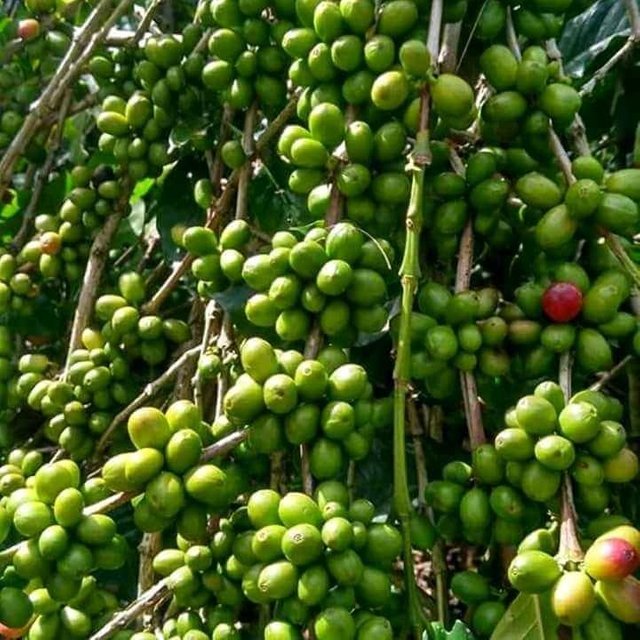Process of coffee beans
A cup of coffee is produced through a very long process. Starting from cultivation techniques, post-harvest processing to the final presentation. Only from high quality coffee beans a cup of high-flavored coffee can be presented at our table.
Coffee that has been harvested must be treated immediately to prevent the occurrence of chemical reactions that can reduce the quality of coffee. The harvest is sorted and sorted according to certain criteria, please read how to harvest coffee. Excellent quality fruits when properly processed will produce high quality coffee.
Generally known two ways to process coffee beans into coffee beans, namely the process of wet and dry process. In addition there is also a semi-wet or semi-dry process, which is a modification of the two processes. Each method of processing has advantages and disadvantages, both in terms of the quality of the beans produced and the components of production costs.
Processing with wet process
The cost of producing the wet process is more expensive than dry process. Wet process is often used to process arabica coffee. The reason, because this type of coffee is priced high enough. So the processing costs incurred are still proportional to the price to be received. Here are the steps to process coffee with the wet process.

a. Sort fruit coffee
After the coffee fruit is harvested, immediately do the sorting. Separate fruit from dirt, diseased fruit and fruit defects. Separate any red fruit with yellow or green fruits. Fine and red color separation of fruit (superior fruit) with inferior fruit is useful to distinguish the quality of the coffee beans produced.
b. Peeling the peel of the fruit
Peel the skin of the coffee fruit, recommended with the help of the peeler. There are two types of peeler, which is rotated manually and powered by the engine. During stripping, flow water continuously into the peeler.
The function of drainage water to soften the skin of the fruit tissue for easy regardless of the seeds. The result of the process of peeling the skin of the fruit is a seed that still has a horn skin, or also called the coffee bean HS.
c. Fermented coffee beans HS
Perform fermentation of seeds that have been peeled. There are two ways, first by soaking the seeds in clean water. Second, piling wet seeds in a cement tub or wooden tub, then topped with a burlap sack that should always be dampened.
The length of the fermentation process in the tropical environment ranges from 12-36 hours. The fermentation process can also be observed from the mucous layer that covers the seeds. When the layer is gone, the fermentation process can be said to be finished.
After fermented wash the seeds again with water. Clean the remnants of mucus and fruit skin that is still attached to the seeds.
d. Drying of coffee beans HS
The next step of the fermented HS coffee beans is dried. Drying process can be drying or drying machine. For drying, spread the HS coffee beans on the drying floor evenly. The thickness of the seed stack should be no more than 4 cm. Behind the seeds regularly especially when still wet.
Long drying around 2-3 weeks and will produce coffee beans with water content ranges from 16-17%. While the desired water content in this process is 12%. The moisture content is the equilibrium moisture content for the resulting stable coffee beans to be unsteady and resistant to fungus attack.
To get the water content in accordance with the desired do drying continued. But this step is usually a long time considering the previous coffee beans have been soaked and fermented in water.
Typically, further drying is carried out with the aid of a drying machine until the moisture content reaches 12%. This step will save more time and effort.
e. Stripping the horns
After the coffee beans HS reaches 12% water content, peel the horn skin that covers the seeds. Peeling can be ground or with the help of a peeler (huller). Recommended with machines to reduce the risk of damage to coffee beans. The stripping result at this stage is called the green bean (green bean).
f. Final sorting of coffee beans
After the rice beans are produced, do the final sorting. The goal is to separate the dirt and seeds rupture. Furthermore, the coffee beans are packaged and stored before being distributed.
Congratulations @jihanaliaayi! You have completed the following achievement on Steemit and have been rewarded with new badge(s) :
Click on the badge to view your Board of Honor.
If you no longer want to receive notifications, reply to this comment with the word
STOPTo support your work, I also upvoted your post!
Do not miss the last post from @steemitboard:
SteemitBoard World Cup Contest - The results, the winners and the prizes
This post has received a 18.32% upvote from thanks to: @jihanaliaayi!!!
thanks to: @jihanaliaayi!!!
For more information, click here!!!!
If you use our Robot before your post has 1 day and get an Upvote greater than 1%, you will automatically receive Upvotes between 1% and 10% as a bonus from our other robots.